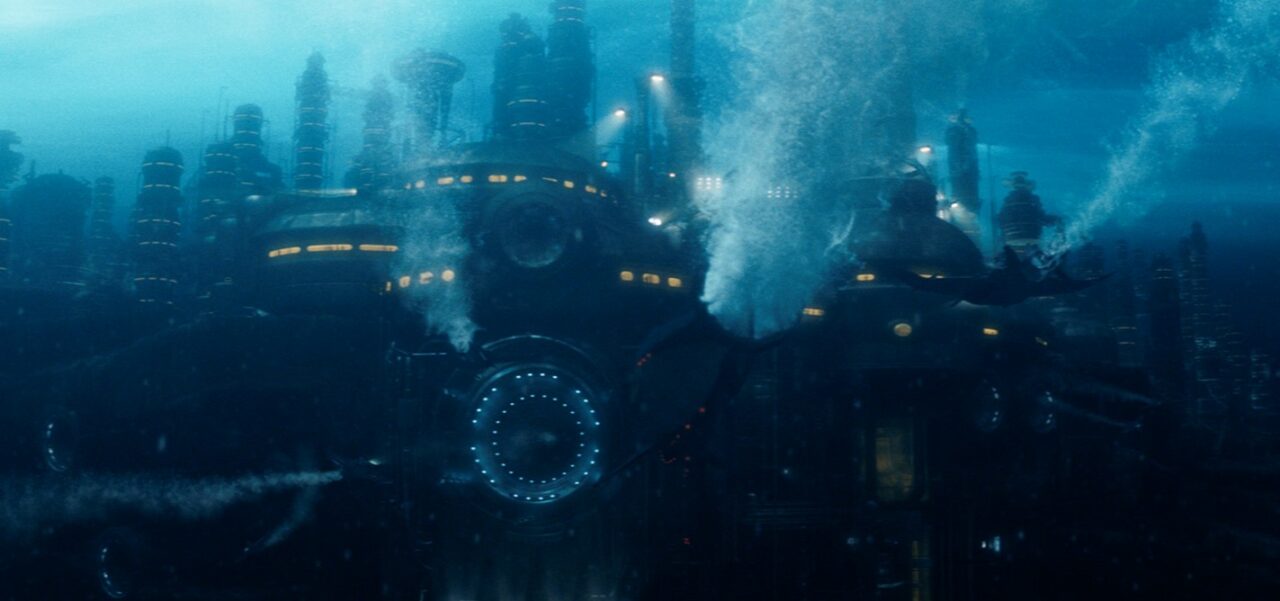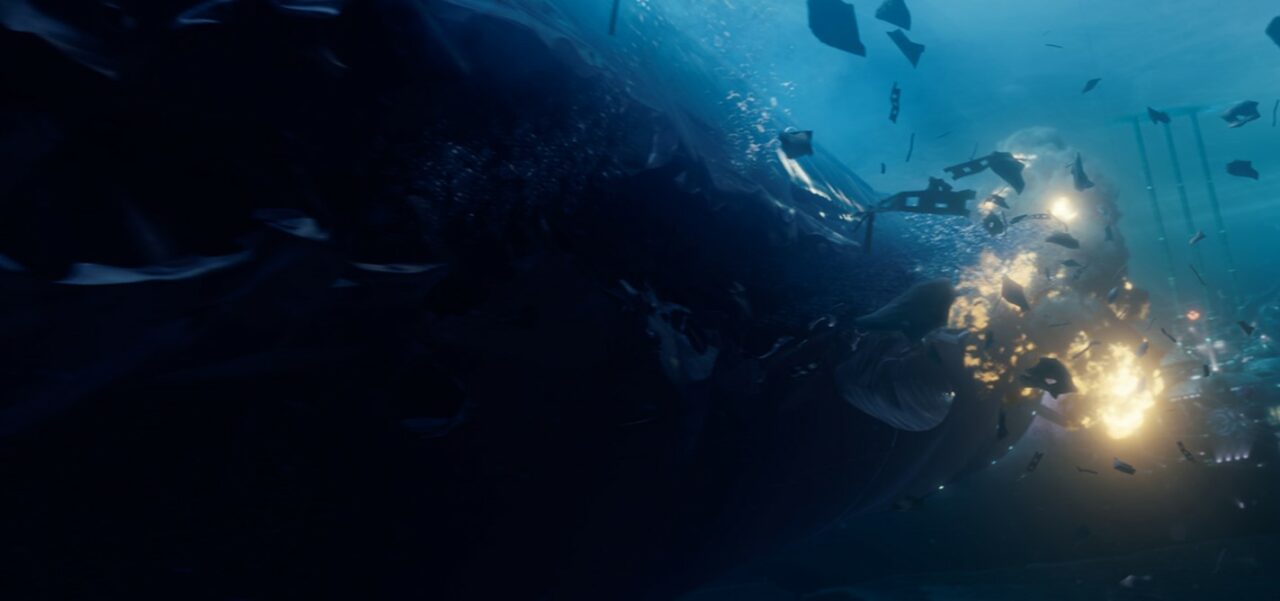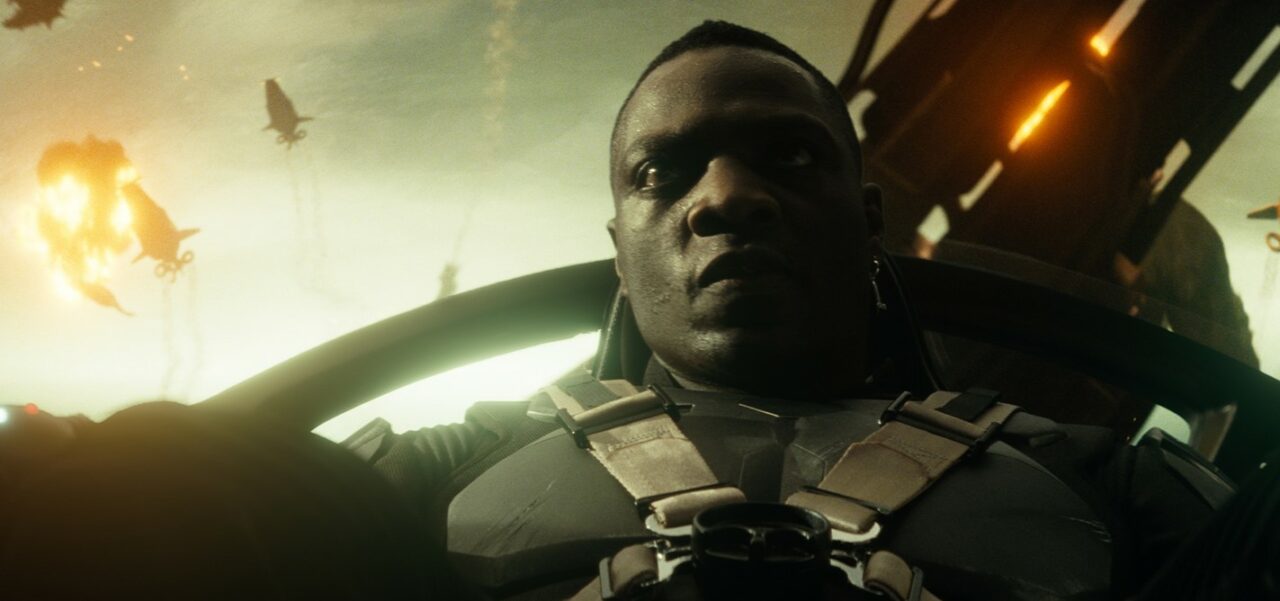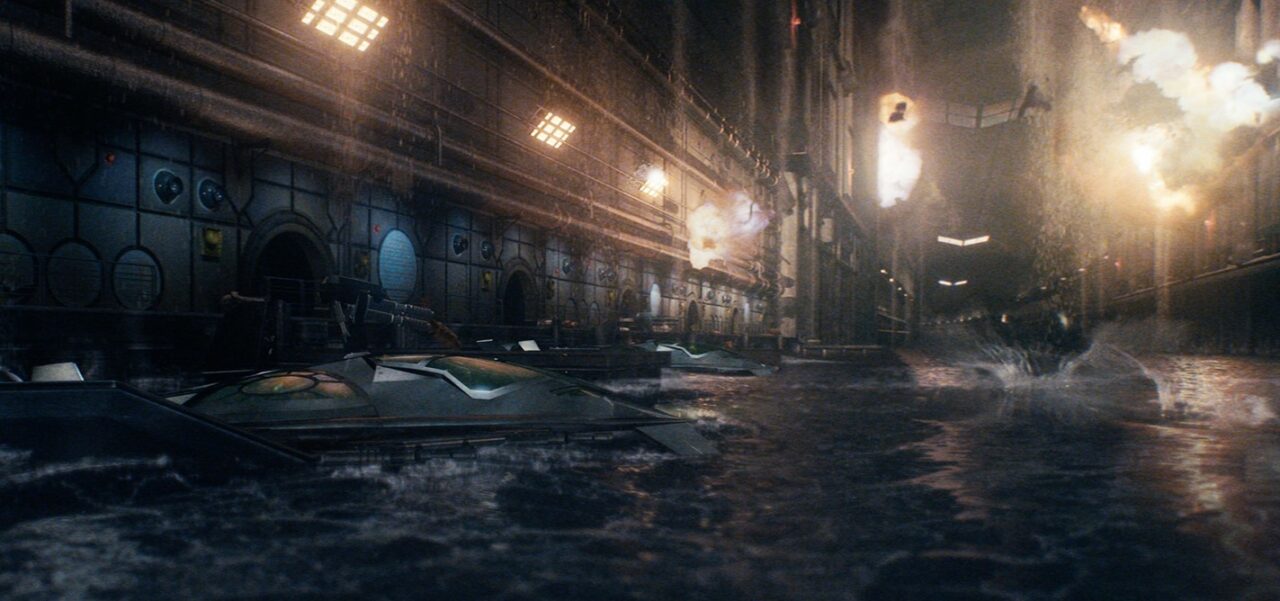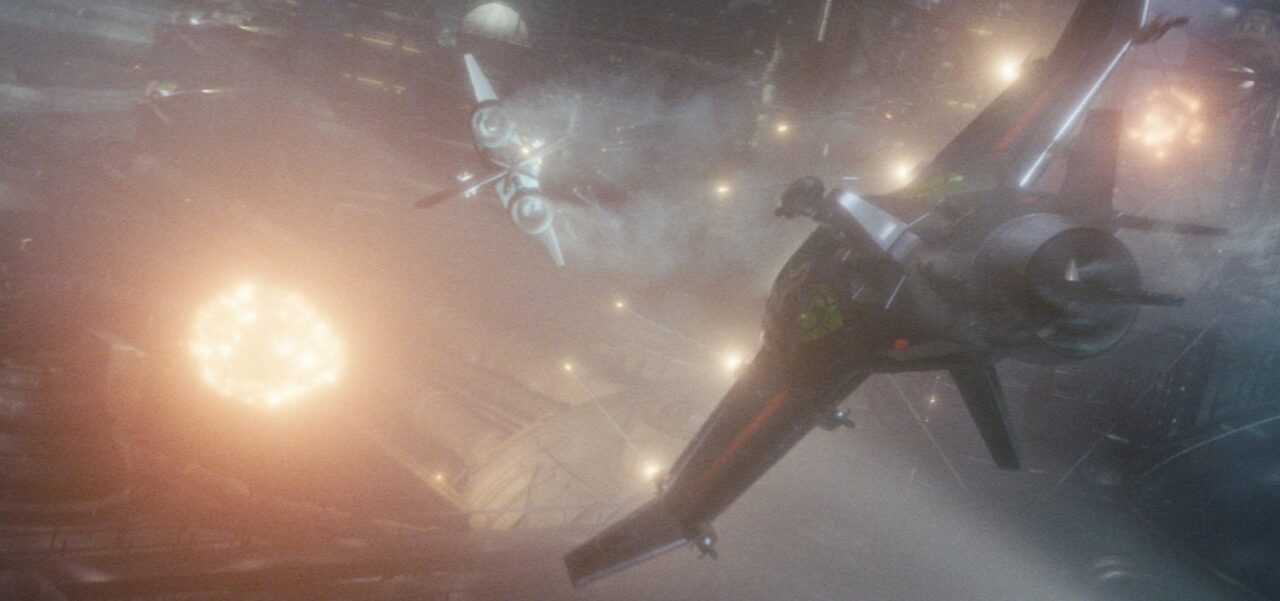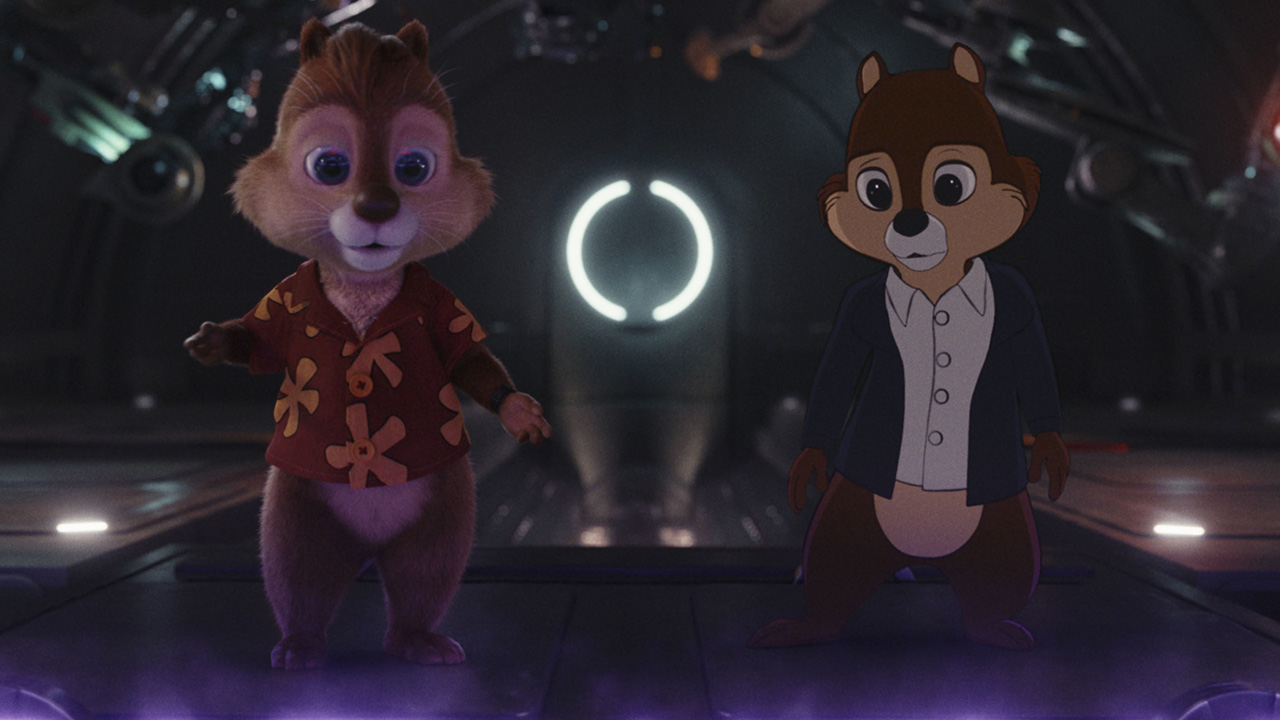MPC’s London studio provided key sequences for Stephen Sommers’ forthcoming ‘G.I. Joe: The Rise of Cobra.’ Based on the well known Hasbro toy, the movie was produced by Paramount Pictures. The MPC team, led by VFX Supervisor Greg Butler worked closely with overall Supervisor Boyd Shermis and VFX supervisor Greg McMurry, to complete 176 shots for the movie. Their challenges included blue screen replacements to window shots in the docking bay looking out onto CG environments and underwater battles and a seven minute fully CG underwater action sequence constituting most of the third act of the film.
MPC’s involvement with G.I. Joe started from the outset with MPC’s concept and design team playing an instrumental role in the design of many of the full CG assets including the main ships and the Cobra Base. The production team provided reference paintings to give an idea of the general direction of the look with MPC later adding in underwater detail and atmosphere. The brief from Stephen Sommers required emulating a ‘classic underwater star wars movie’ which called for realistic environments with hero buildings. Sommers also cited the dive fight in Thunderball and other action movies as key reference.
MPC’s CG team built the fully underwater station environment using Maya and rendered using a mixture of Renderman and Mental Ray depending on the sequence content. The usual CG challenges of creating fluids applied, with much testing to create a believable environment.
To aid to this, the R&D team were also instrumental in the project. They focused on solving the numerous and well documented creative and technical challenges of underwater CG. In the main, the team investigated the physics of the underwater environment and how this affects colour refraction and visibility fall off using reference sourced from arctic underwater photography which has the best vis of underwater environments; up to 400m. The result was a specific colour curve operation for shaders which helped to manage to colour fall off in the depths by shifting colours to blue across a curve. This also gave efficient light volume for rays. The R&D crew also focused on the underwater explosions which required research into underwater explosion and implosion techniques essentially requiring a zero gravity situation.
